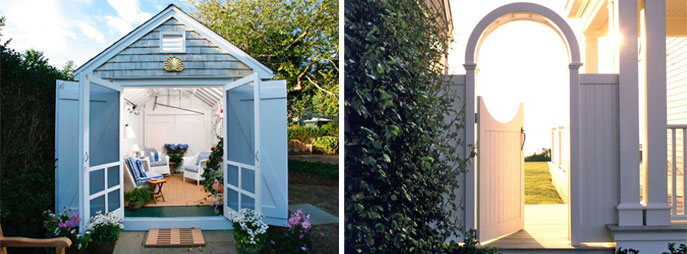This year, I was honored to be asked to speak at the prestigious Philadelphia Antique Show, taking place at the Pennsylvania Convention Center from April 28th to May 1. Although previous commitments meant I had to decline a speaking role, I did submit an article to the Show catalog, describing the link between antiques and ‘green.’ The following is what appears in the catalog. If you’re in the area, I hope you’ll go!

(Photo: This antique German Biedermeier Chest in walnut burl is circa 1820. On top is a hotel silver tea service. Hotel silver was made for the grand hotels in Europe and the United States, and today conveys a reminder of the sumptuous lifestyles of the past.)
Antiques have long been collected for their beauty and their value as historical treasures, but perhaps it is time we look at antiques in an entirely new way. Not only do they add grace and style to my home and the homes of my clients, they are also the ultimate in green design, a personal passion of mine!
I have always been an ardent collector of antiques, and the addition of carefully selected pieces to sophisticated interiors is a recognizable signature of my design style. Sharing my love for classic pieces comes naturally to me. I find that my clients quickly embrace the elegance of antique furniture, and often become collectors themselves. Homes are brought to life when old paintings, pieces of porcelain, or folk art add their charming artistry.
No matter how your personal style is expressed, every home has space for antique pieces. Even the sleek lines of a contemporary home can be complemented by eye-catching antique furniture; a room can artfully blend both old and new. A writing desk in the corner, reclaimed barn wood on the floor, or a wing chair handed down through generations can add flair as well as refinement to a home’s interior.
In addition to their beauty, antiques provide a bonus you may not have considered. As we learn more about how to assess the health of our living quarters, and steps we can take to keep our homes clean and pristine, we should think about the ways antique furniture can be an integral part of a green lifestyle.
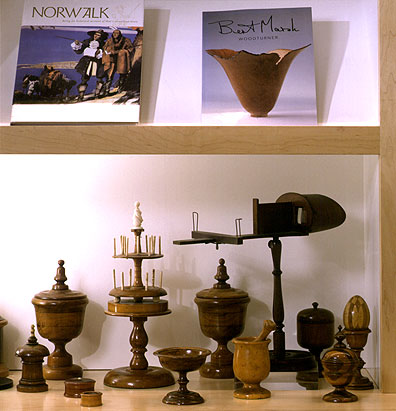
(Photo: This is a fabulous collection of treenware dating from the 19th to the 20th Century. Note the darning egg, and the antique stereoscope–the earliest form of television! The book displayed is by British treenware master Burt Marsh.)
No Chemical Vapors Are Brought into your Home
Your home’s interior should be a place of fresh air and health. Yet any new piece of furniture, cabinetry, flooring, or finished wood has some chemical overtones. Many fine finishes release vapors in a process called off-gassing. In a closed environment, such as an energy efficient, airtight home, off-gassing can increase indoor air pollution to levels several times higher than those detected outside. Antiques are a healthier choice than modern furnishings because they were created with less toxic products years ago, and any off-gassing has long been complete.
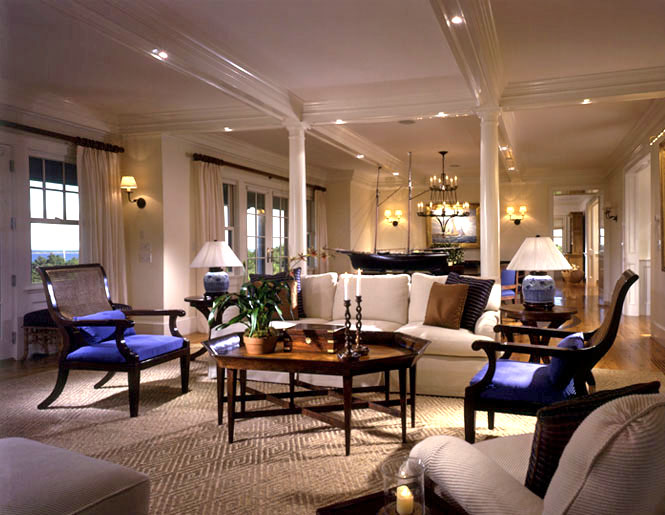
(Photo: This living room is a showcase for beautiful antique accessories, including a 19th Century ship’s model behind the sofa, and a pair of lamps made from 18th Century Chinese Export porcelain. A pair of 19th Century British handcarved candlesticks and a 19th Century ship’s captain’s lap desk are on the cocktail table.)
No New Resources are Used
Every beautiful piece of wooden furniture originated from a tree. Whenever we purchase new wood furniture, unless we choose products certified by the Forest Stewardship Council (FSC), we are contributing to the deforestation of our planet. In contrast, wooden antiques are products of trees culled long ago from old-growth forests. No new resources were used in their construction, making their restoration and re-use a green endeavor. It just makes sense to find a place in our homes for older pieces.

(Photo: This study reflects the long seafaring history of the coast, with a 19th Century ship’s telescope, and a 19th Century ship’s barometer hanging to the right of the window. Framed antique prints are on the wall, and on the mantle is part of a collection of sea captain doorstops.)
No Negative Environmental Impact is Created
Beyond the health issues in our homes, we should consider the costs to our planet. Even the very greenest furniture manufacturers distribute impurities into our air, waste systems, and water. New furniture requires the production of finishes, dyes, and sealants. Shipping them demands the creation of packing materials, and they arrive in retail stores via large vehicles powered by fossil fuel. The EPA estimates that three million tons of furniture are taken to landfills every year, only to be replaced with brand new pieces that can carry a large environmental cost.
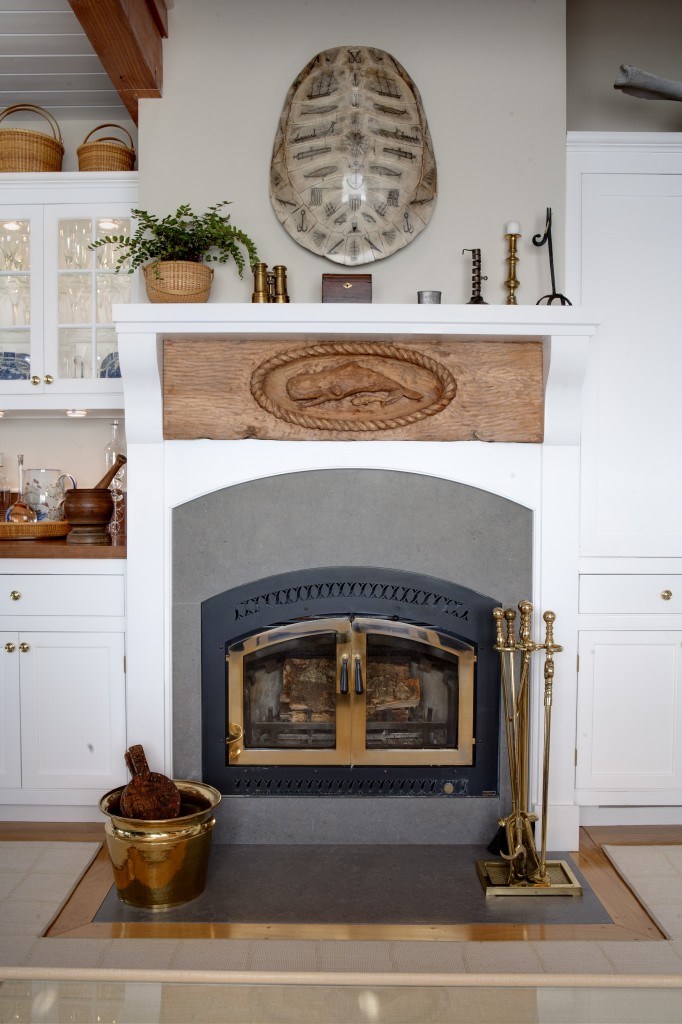
(Photo: An extremely rare 19th century English scrimshaw tortoiseshell is displayed above the fireplace; on the mantle are several antique lighting devices: a corkscrew pigtail candlestick complete with hook for hanging over a chair, a rush light holder, and antique binoculars.)
Antiques Are Recycling at Its Best
Beloved family pieces, eighteenth-century Philadelphia furniture, and the softly faded colors of aged Oriental rugs do not belong in a landfill. Treasures from another time can be loved and used again. A federal mirror that has been passed from home to home and hand to hand brings history to life, and honors the work of artisans who lived long ago.

(Photo: This is a mint condition 18th century British Woolie, The Ship of Bengal, unusual for the ship’s identification as part of the design, and for its display of the British flag.)
Antiques Bring Unique Craftsmanship to a Room
Rather than purchasing a mass-produced item, treat yourself to something created in a small workshop by a craftsman who made good use of few resources. In previous centuries, home furnishings were made by hand before machine assembled items flooded the marketplace. Artisans from years gone by had knowledge that largely disappeared during the Industrial Revolution. Old joining techniques were abandoned in favor of more rapid assembly using staples and nails. Fiber board was created and the beauty of the wood itself was lost. Take the time to consider the difference between a finely hand-wrought piece and one processed in a factory.
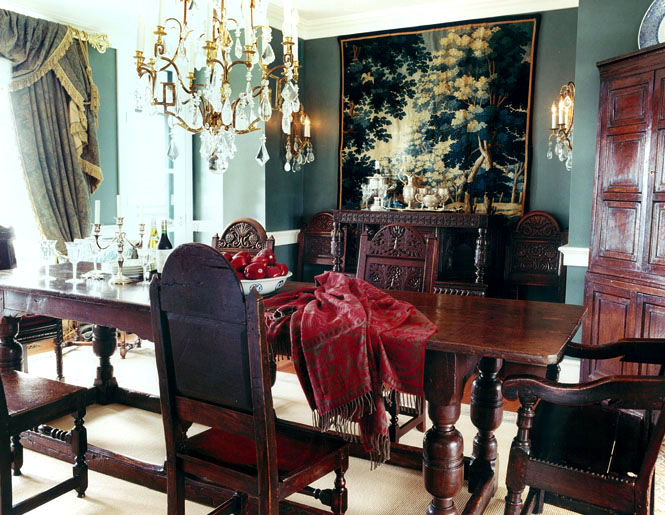
(Photo: This English antique dining table and chairs date from the 16th and 17th Centuries, and are displayed with an 18th Century tapestry and Chinese blue and white porcelain.)
Antiques Have Stood the Test of Time
Classic pieces are sturdy and well-made, which is why they have lasted. The quality of their wood is usually stronger, created from timber with tighter growth rings, making repair a simple task when necessary. Furniture that is unworthy of a craftsman’s repair time adds to our cycle of wasteful consumption. Your rooms can be filled with the kind of solid, enduring pieces that elevate both your life and your home’s design.
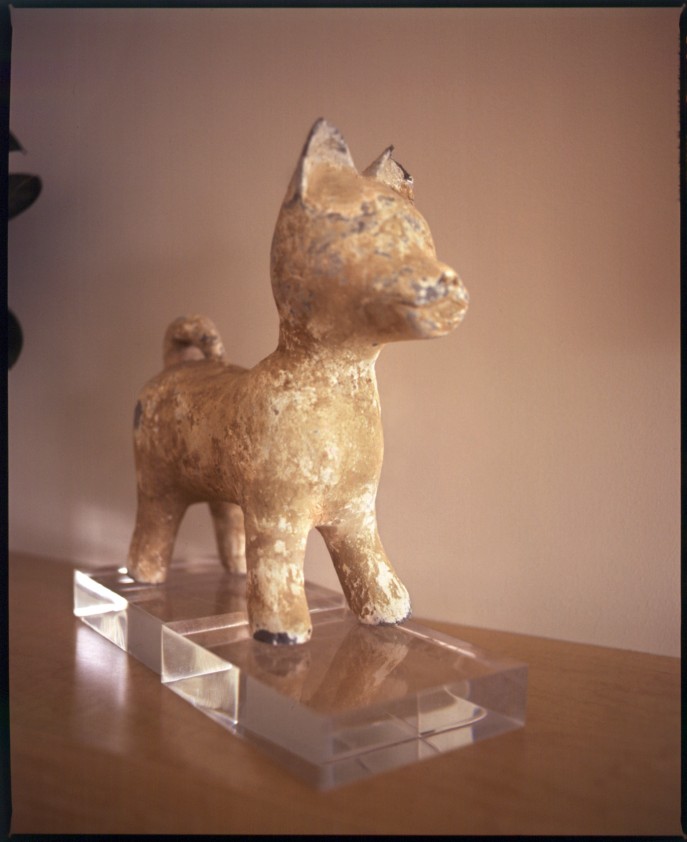
(Photo: This closeup of a Chinese puppy displayed on a modern Lucite block is from the Han Dynasty, circa 206-220 BC.)
Antique Collections Are a Very Personal Expression
I often find that a simple gesture, such as placing an antique tea caddy on a mantel, can inspire my clients to begin collections of their own. There is tremendous beauty in items preserved throughout the years, particularly if they illuminate another time and way of life. Learning about the subtle differences among artisans, the period when an item was created, or the materials that were used to make it, gives us a greater appreciation for life. Whatever you collect, it is unique to you and your home, and cannot be duplicated.

(Photo: A nautical/maritime collection of whaling logs dating from 1840 offers a fascinating glimpse of the past as you trace the daily activities of a whaling ship. The whale stamps mark successful captures.)
My personal collections include treenware (hand-carved wooden items used in the home long ago), old hotel silver, blue and white porcelain, and things that speak to me of lives lived on the ocean, including whaling artifacts, scrimshaw carvings, and sailor whirligigs.
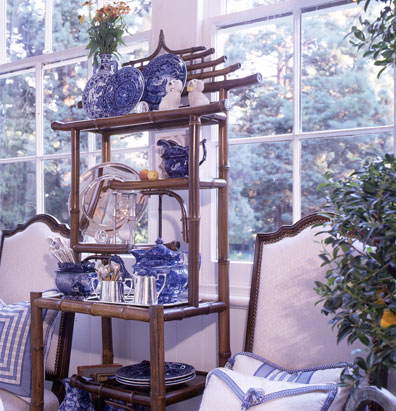
(Photo: This 19th Century Chinese-influenced etargere is showing a collection of blue and white porcelain, both Chinese Exportware and Staffordshire English pottery. Hotel silver has been added for sparkle.)
Remember, It Is Not All Furniture
You can find antique cabinetry, flooring, doors, beams, posts, mantels, and other architectural pieces. Consider a gorgeous eighteenth-century door to add punch and personality to your entry, or if that is not in your budget, how about antique doorknobs and a doorknocker? An old mantel delivers instant charm; remilled old timbers bring panache to the pantry. Add the incredible details that your home may be missing.
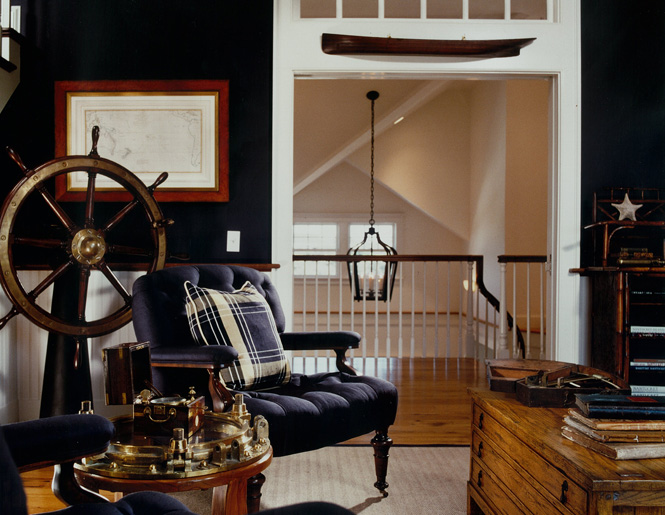
(Photo: The antique ship’s wheel is from an old Australian ship; the 19th Century ship’s porthole made into a table holds a sextant. A wonderful South Pacific map on the wall was drawn by James Cook, the famous explorer who later became Captain Cook.)
Antiques Add Beauty and Joy to Life
There is a thrill when you spot the perfect nineteenth-century French farm table, Georgian stand, or double pedestal dining table. You feel an immediate connection to the Italian walnut commode or a beautiful pair of small paintings. Antique collectors know that old things have a soul, based on their authenticity. Whether you fall in love with hand-embroidered vintage textiles, white ironstone pitchers, or a four-door linen press, you can feel good about reducing your footprint on the surface of the earth.
(Photo: Elegance is added to entertaining with this 19th Century French balloon-handled fish service. The introduction of a seashell is a casual complement to the 19th Century blue and white Staffordshire plate and 18th Century drinking goblet.)

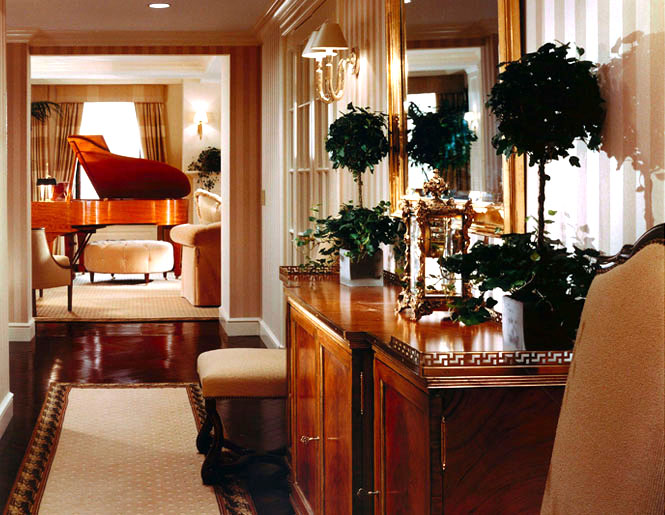
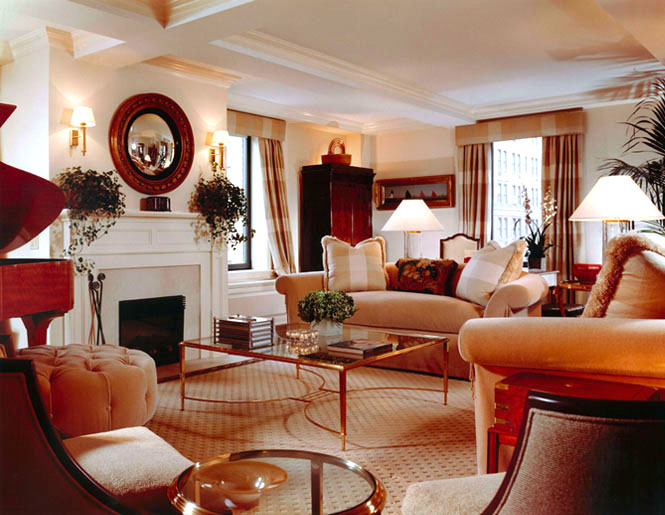
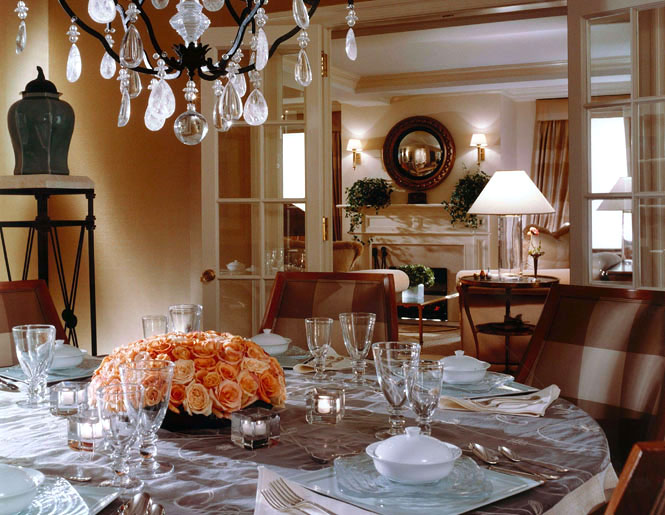
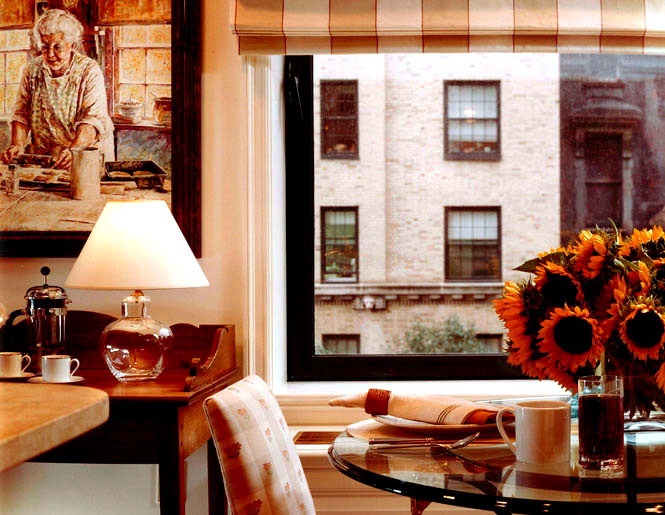








 “The rushing of the sea–tides of the soul; And inspirations, that we deem our own.”
“The rushing of the sea–tides of the soul; And inspirations, that we deem our own.”

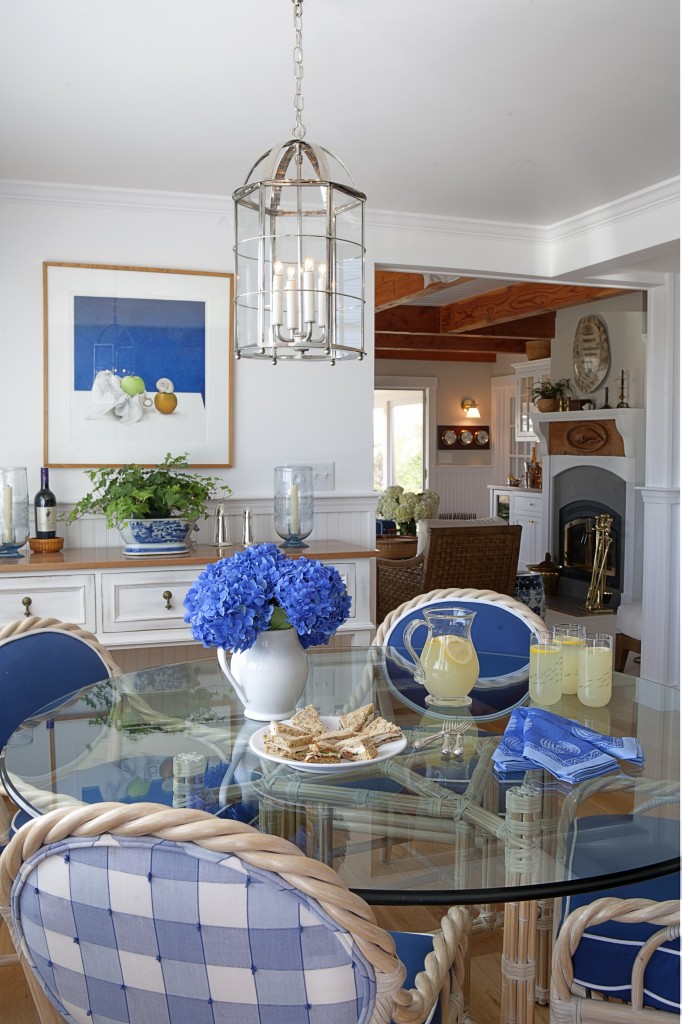

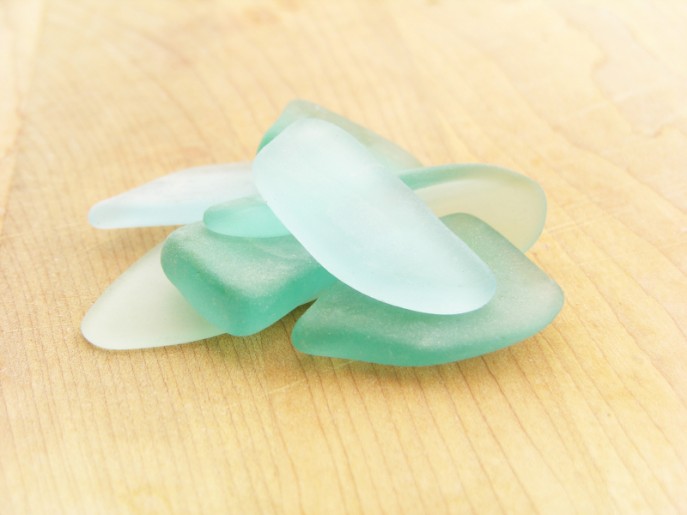


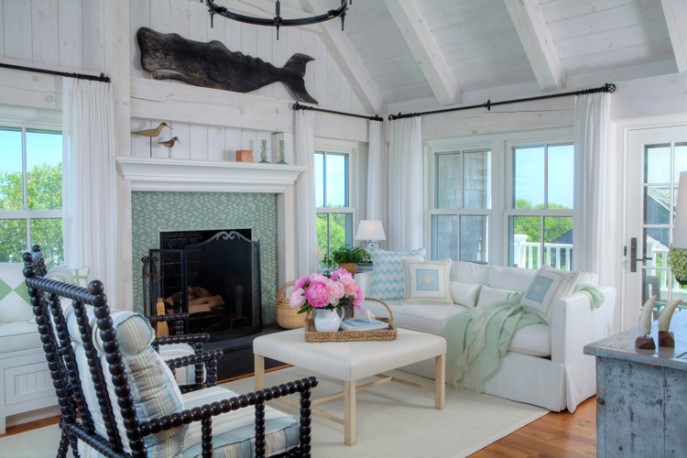
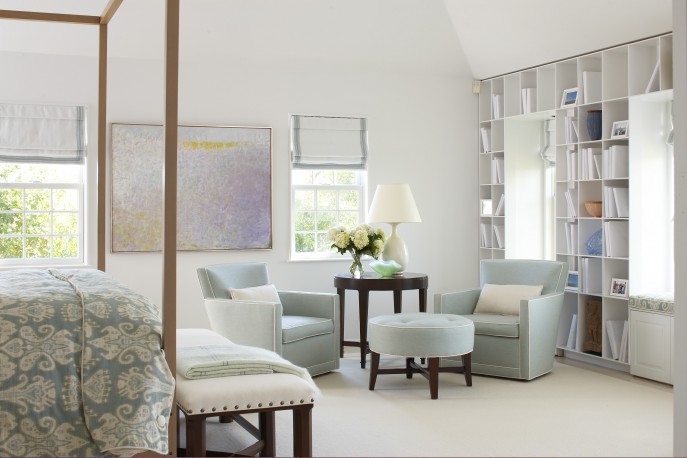

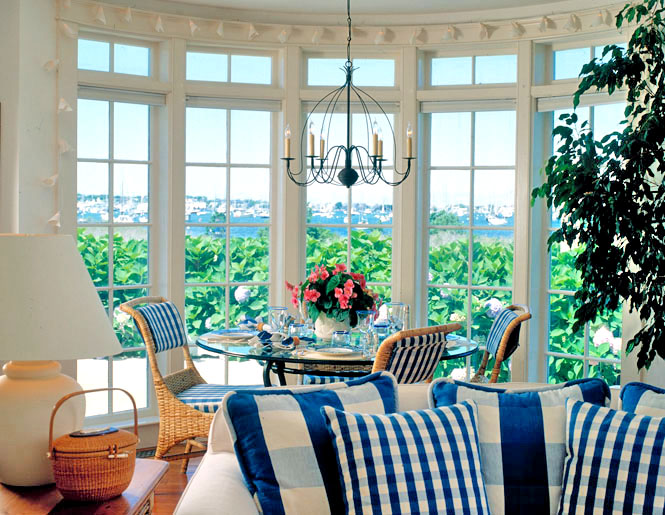
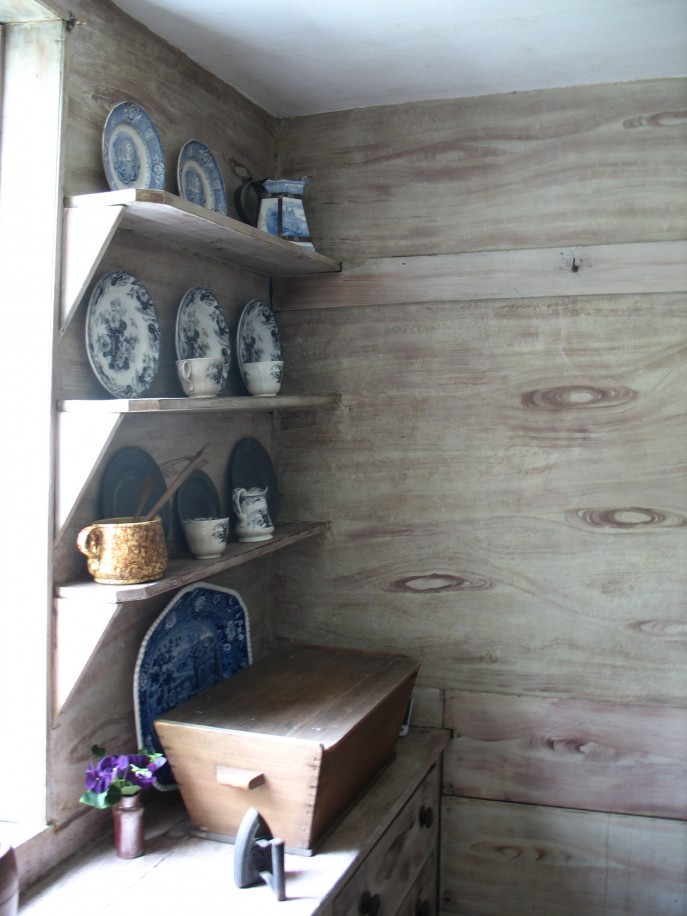

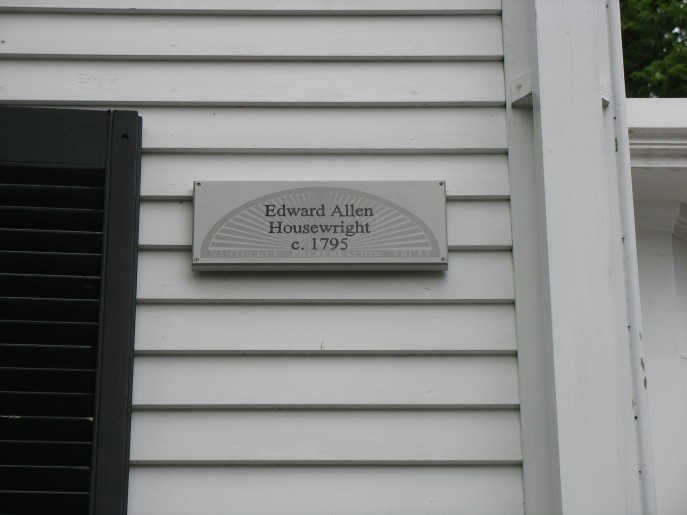 NPT House Marker program provides passersby with an opportunity to learn more about a historic building; photo by Michael May
NPT House Marker program provides passersby with an opportunity to learn more about a historic building; photo by Michael May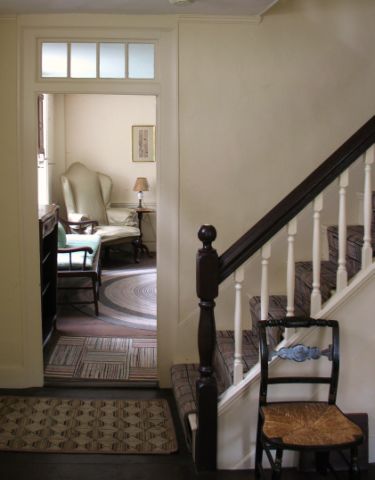
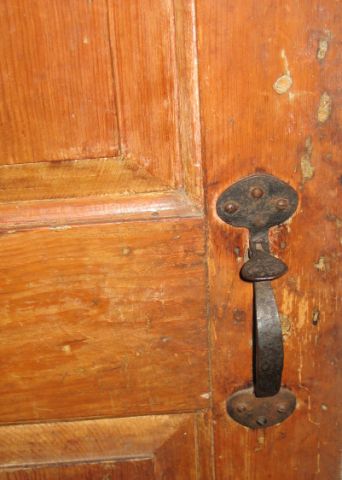
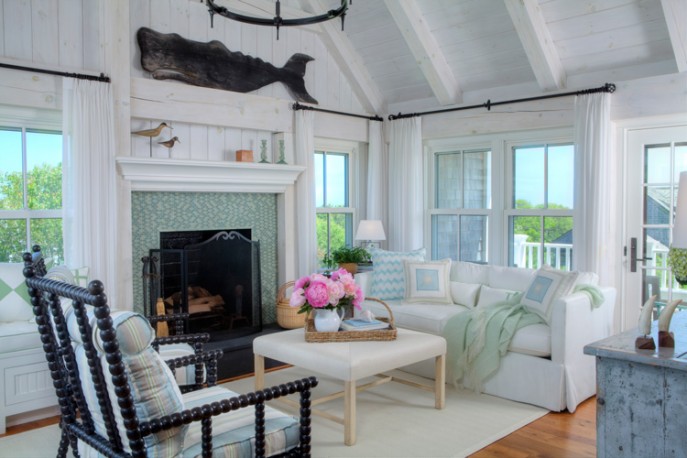
 An “upside down” house, in traditional island style, is one in which the living areas and master bedroom are on the second floor, in order to take advantage of stunning water views best seen from a higher vantage point. This secluded home has a beachy charm overlaid with elegance, where precious antiques and original artwork are blended with personal mementos. The dining table above is an antique lacemaker’s table, surrounded by a set of painted 19th century chairs.
An “upside down” house, in traditional island style, is one in which the living areas and master bedroom are on the second floor, in order to take advantage of stunning water views best seen from a higher vantage point. This secluded home has a beachy charm overlaid with elegance, where precious antiques and original artwork are blended with personal mementos. The dining table above is an antique lacemaker’s table, surrounded by a set of painted 19th century chairs.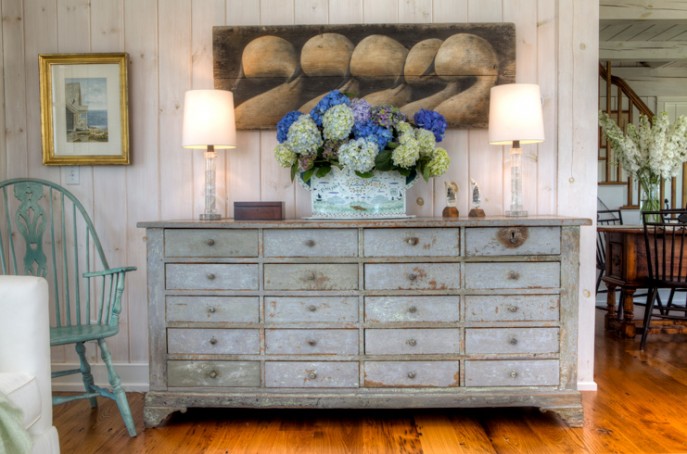 This Swedish Apothecary chest is one of the unexpected treasures found throughout the home. Although its owners are challenged to fill every one of the twenty drawers, we knew it would be perfect here. We re-envisioned the space for this striking piece!
This Swedish Apothecary chest is one of the unexpected treasures found throughout the home. Although its owners are challenged to fill every one of the twenty drawers, we knew it would be perfect here. We re-envisioned the space for this striking piece!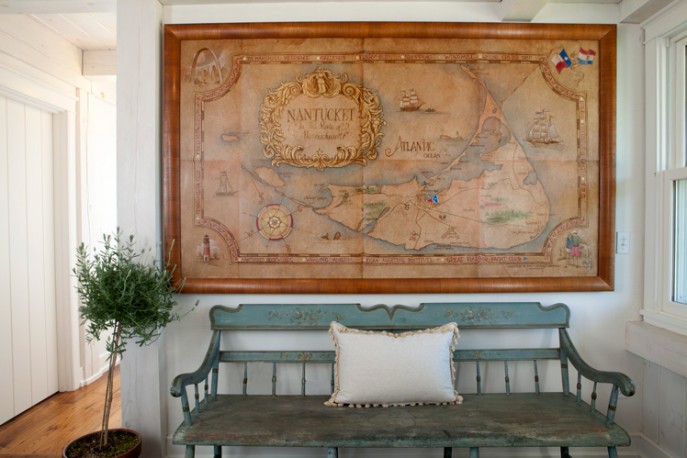 Unusual artwork that doubles as a conversation starter works beautifully in an entry way, when guests are being welcomed. Their first view of the home should be an enticing one, promising equally interesting and elegant rooms to come. Created for Dujardin Design by artist Christian Thee to suggest a pirate’s treasure map, the couple’s favorite spots on the island are pinpointed: the basket museum, the Great Harbor Yacht Club, and the airport where they joyfully make their island arrival.
Unusual artwork that doubles as a conversation starter works beautifully in an entry way, when guests are being welcomed. Their first view of the home should be an enticing one, promising equally interesting and elegant rooms to come. Created for Dujardin Design by artist Christian Thee to suggest a pirate’s treasure map, the couple’s favorite spots on the island are pinpointed: the basket museum, the Great Harbor Yacht Club, and the airport where they joyfully make their island arrival.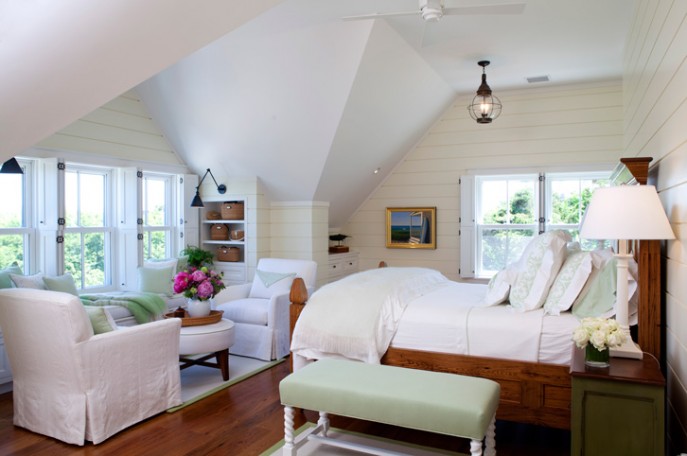
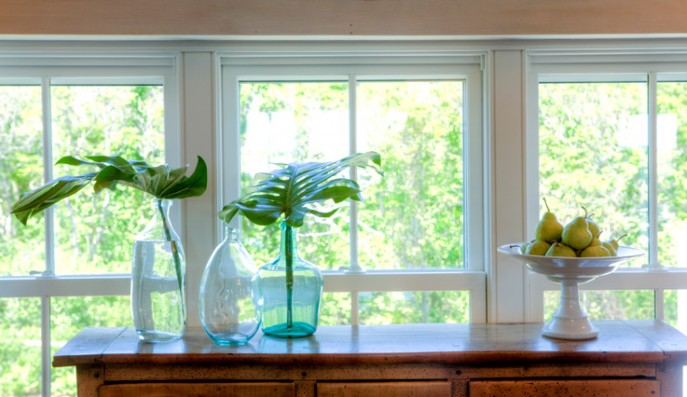
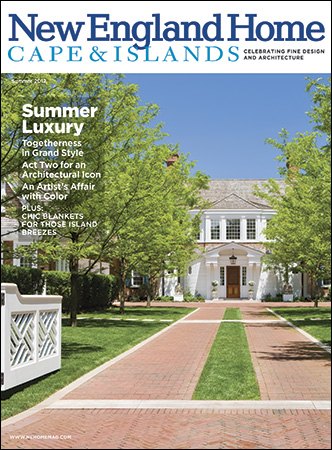
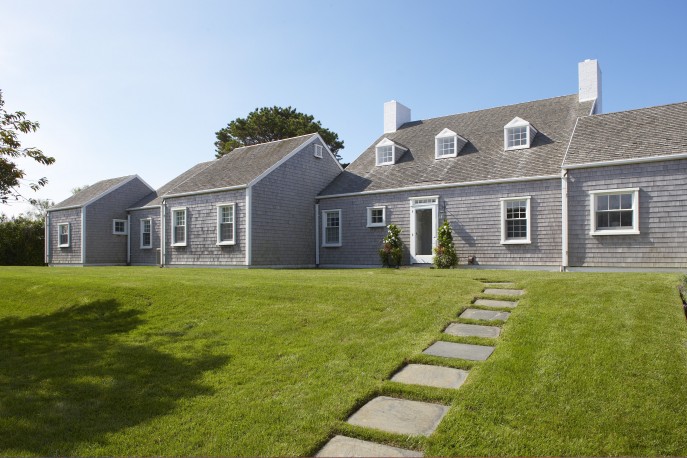
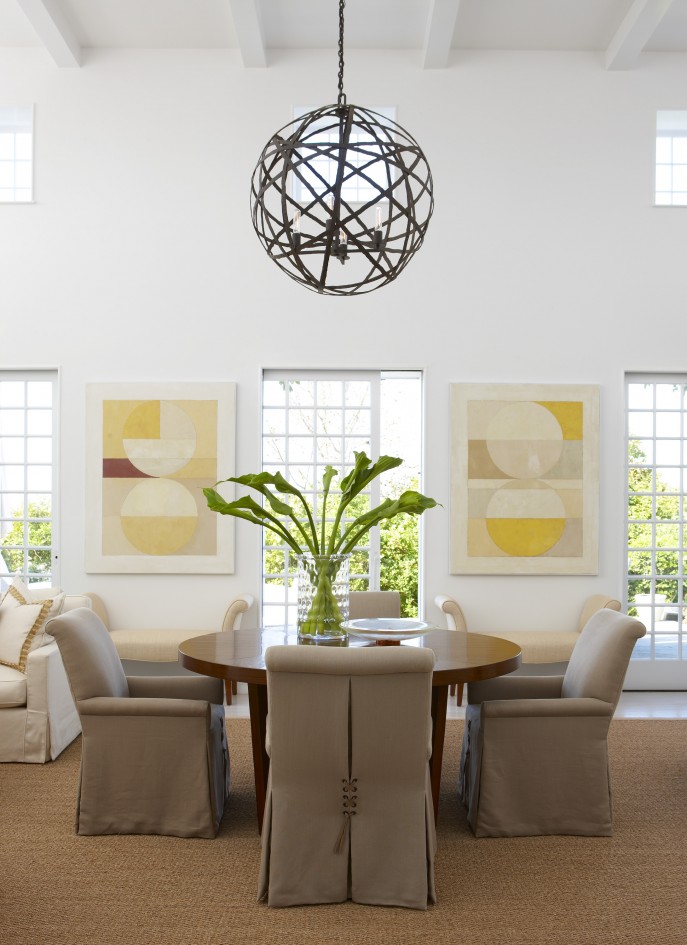
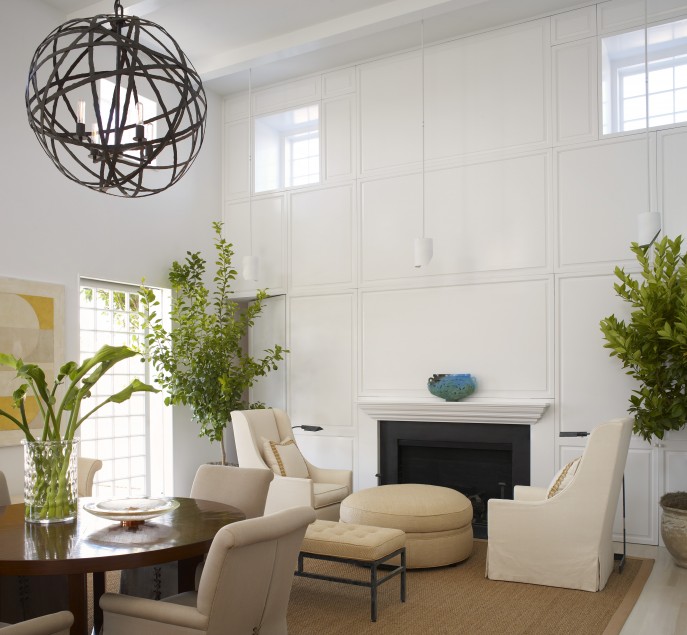
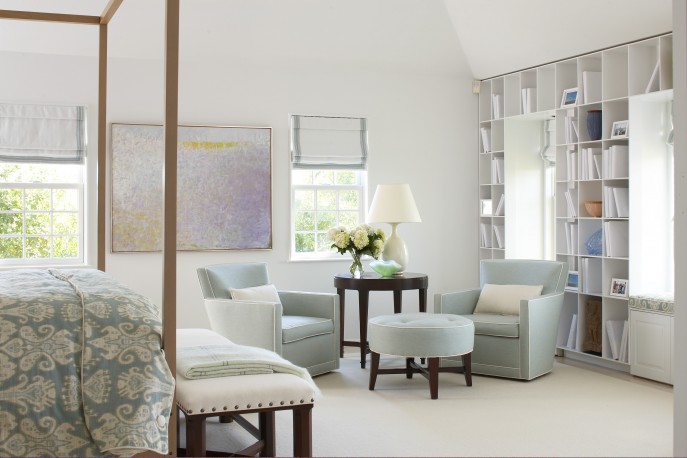
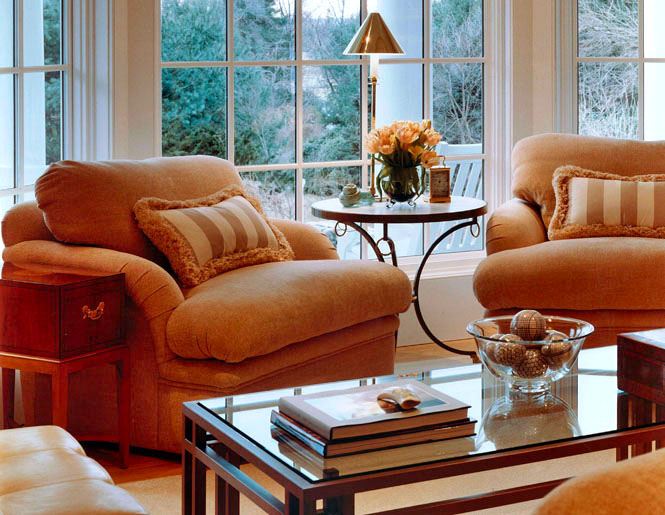
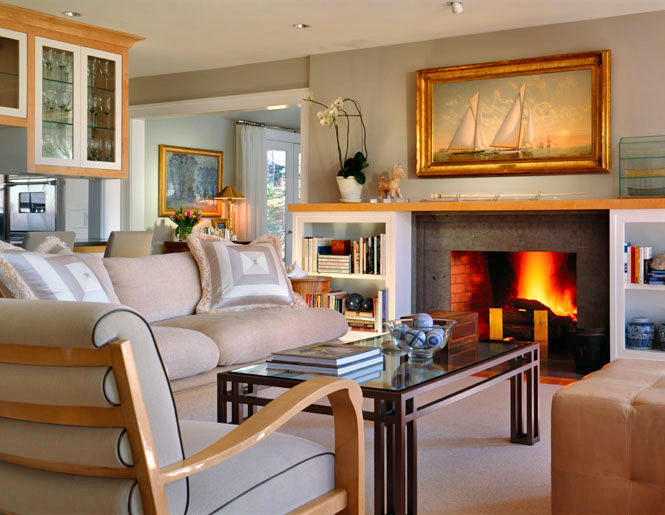
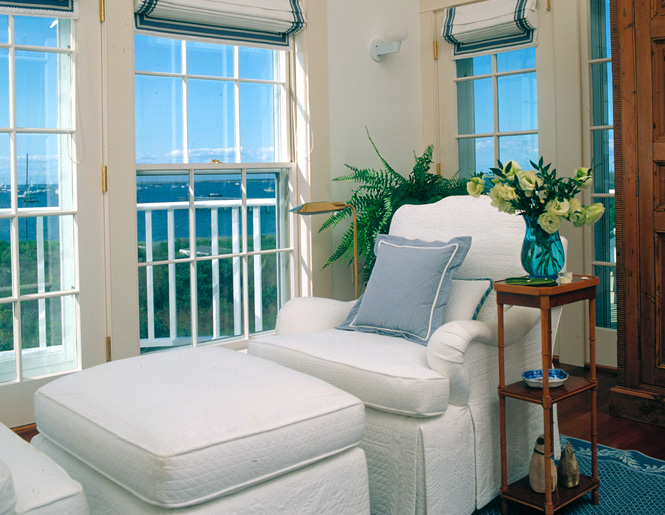












 Because my beach house is on Nantucket, it’s that island’s unique slant of light (rivaling Giverny) that I draw upon for inspiration in my design work. In decorating no two projects are alike. They’re client-driven, personal and unique. But there’s a reason for my love of blue and white (Chinese Export Porcelain) with touches of pink (New Dawn roses) and yellow (daffodils dancing down Milestone Road on the island.) There’s a reason for my love of sand and sea colors: to forget the shades of water and sky is impossible when your home is nestled somewhere near a beach.
Because my beach house is on Nantucket, it’s that island’s unique slant of light (rivaling Giverny) that I draw upon for inspiration in my design work. In decorating no two projects are alike. They’re client-driven, personal and unique. But there’s a reason for my love of blue and white (Chinese Export Porcelain) with touches of pink (New Dawn roses) and yellow (daffodils dancing down Milestone Road on the island.) There’s a reason for my love of sand and sea colors: to forget the shades of water and sky is impossible when your home is nestled somewhere near a beach.